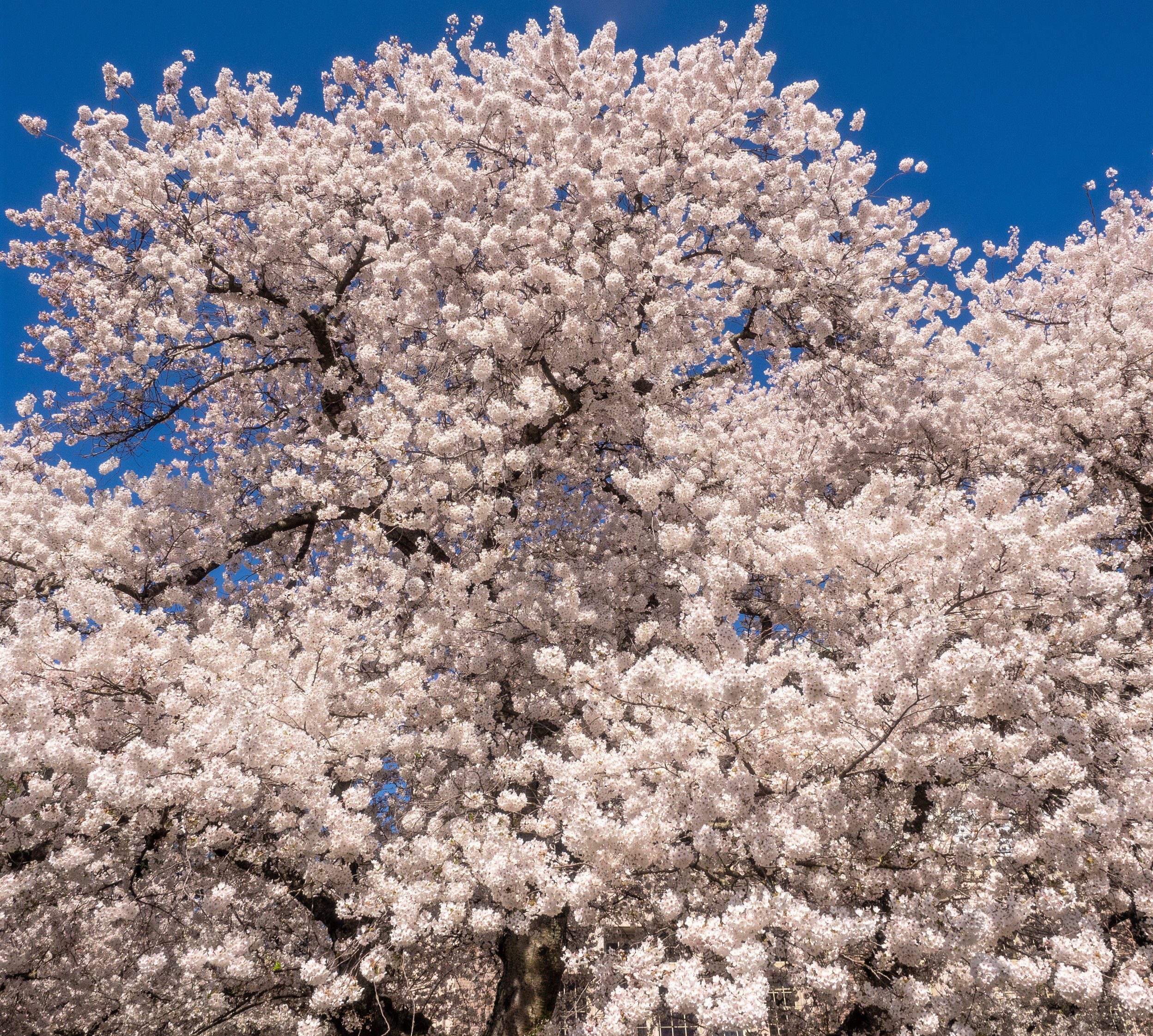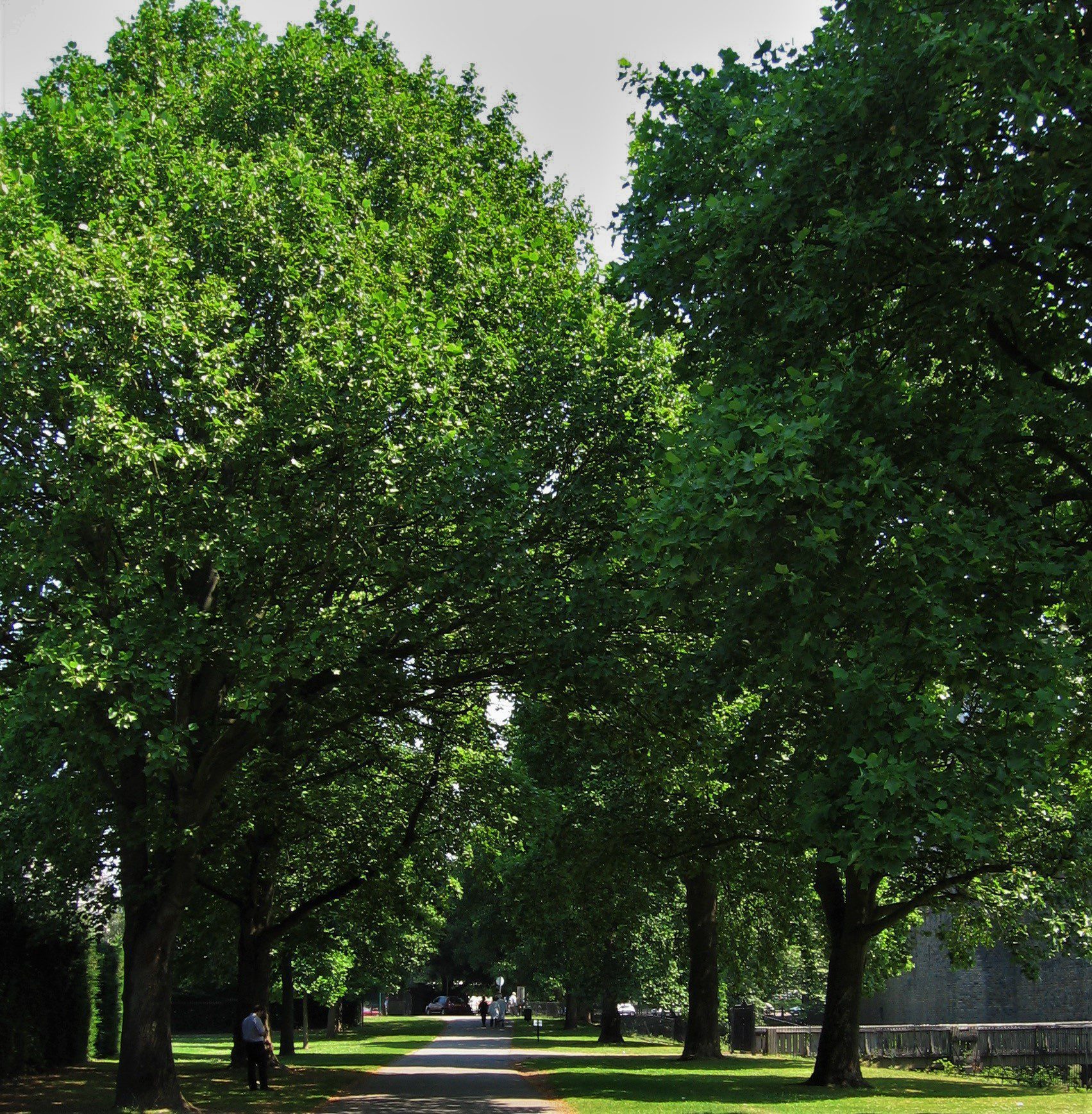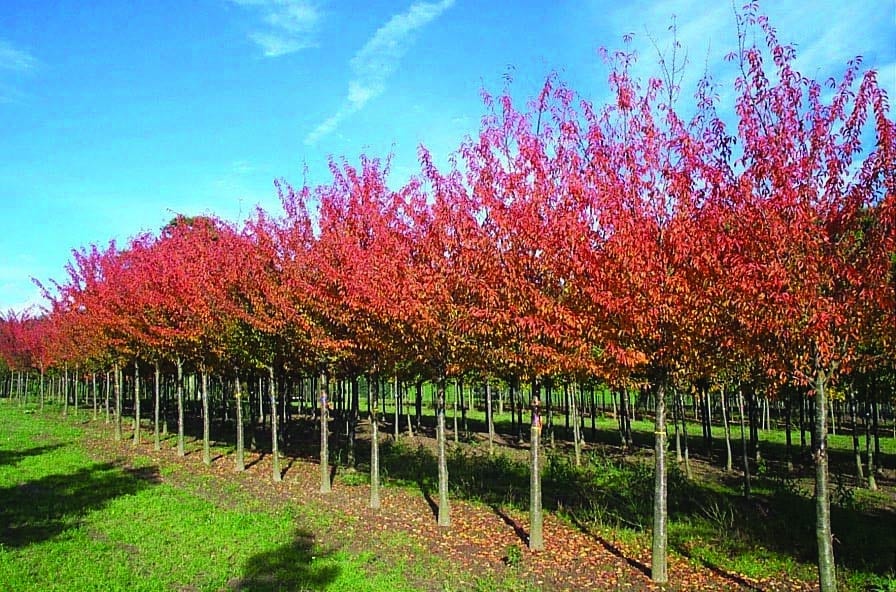One of the very many positives that trees bring to the environment is year-round interest. From gnarled structure during winter to spring blossom and flourishing greens in summer, they improve the landscape for all those who lay eyes on them.
Autumn, in particular, showcases trees in their most magnificent display. While shorter days might otherwise bring a sense of gloom, trees uplift our spirits with the breath taking spectacle of fiery leaf colours changing. While scientifically attributed to the breakdown of green chlorophyll in leaves, to our eyes, it appears as a grand finale heralding winters arrival.
At Hillier Trees, we grow a huge range of trees with outstanding autumn colour to suit every planting situation. These are five of our favourite varieties.
Acer rubrum ‘October Glory’
A hardy tree that, true to its name, provides an outstanding autumn display that very few species can rival. This cultivar originated from the many valuable propagations from brothers William and John Flemer of Preston Nursery during the 1960s.
The exceptional autumn leaf colour of Acer rubrum ‘October Glory’ turns later than other maples —in October and continuing through until the end of November. You will be rewarded for the wait with the most fantastic display of candy apple reds, saffron and golden yellows.
This is a great tree for avenues, estate entrances or the background line in a park.
Fact File
Common Name: Red Maple
Environment: A hardy tree that is best in slightly acidic soils, as it does not truly develop its autumn colour on dry or lime soils
Autumn Interest: Stunning autumn leaf colour from October into November
Size: 8m high x 4m wide after 25 years
Acer x freemanii ‘Autumn Blaze’
This unique tree variety of acer is a cultivar from a naturally forming hybrid between Acer rubrum (red maple) and Acer saccharinum (silver maple). It was discovered and cultivated by Glenn Jeffers in 1960s America, giving rise to the alternative common name ‘Jeffers Red’.
This hybrid takes the best qualities from each of its parents. It is tough and resilient like the silver maple, with the grace, beauty and vibrant colour from the red maple. As the autumn nights draw in, the tree’s emerald leaves ignite into a blaze of scorched orange and crimson reds, becoming a real centrepiece. These are resilient trees with outstanding autumn colour that will show regardless of its location, as it is not reliant on higher pH levels to enhance its glorious colour.
Fact File
Common Name: Freeman’s Maple / Jeffers Red
Environment: A resilient tree that succeeds on the majority of free-draining soils
Autumn Interest: Becomes ablaze with early autumn colours of gold, ruby and plum
Size: 10m high x 6m wide after 25 years
Gingko Biloba
This historic tree is the national tree of China and a favourite amongst landscapers the world over. Although it is a deciduous tree, it is botanically exclusive and classed as a conifer which dates back to the Jurassic period 270 million years ago.
Gingko biloba is renowned for its unusual leaf shape – the name biloba is derived from ‘Bis’ meaning two, and ‘loba’ meaning lobed, referring to the shape and split of the leaves. It is also famous for its stunning autumn beauty, displaying incredible gold, saffron-yellow foliage. When planted and matured along avenues, the autumn show of its golden leaves is breathtakingly beautiful and can transform roadways.
The female Ginkgo produces fruit which falls in the autumn. These are cherished throughout Asia and used to create the vegetarian dish Buddhas delight.
Fact File
Common Name: Maidenhair Tree
Environment: A tough tree that will establish in any soil structure with good drainage. Ideally suited for urban locations, tolerating a crammed, compacted root space
Autumn Interest: The unique fan-shaped leaves develop a fantastic autumn colour of royal gold and butter yellow
Size: 10m high x 5m wide after 25 years
Liquidambar styraciflua ‘Lane Roberts’
During the late 1960’s, Dr. Lane Roberts purchased a seedling Liquidambar from his friend, the late Sir Harold Hillier of Hillier Nurseries. A few years late, he contacted Sir Harold, marveling at the fantastic autumn colours the Liquidambar provided. Harold, a curious plantsman, went to see this tree and, having admired its deepest shades of crimson red foliage, immediately requested propagation cuttings. He cultivated this form and named it in honour of his customer and friend, Dr. Lane Roberts.
Liquidambar ‘Lane Roberts’ is slightly smaller in size than its parent, with a uniformed central leader and smooth bark. In autumn, it really comes into its own. Its leaves eclipse into almost black shades of crimson purple and Bordeaux red. It exhibits the most consistent autumn displays of all Liquidambars and their cultivars, providing the deepest colours every year that continue long into the autumn.
Fact File
Common Name: Sweet Gum
Environment: Appropriate for the unpredictable UK climate. Suitable for most soil types. Ideal for public open spaces, housing estates and prominent business parks
Autumn Interest: Deep, succulent shades of red foliage throughout the autumn months. One of the very best autumn displays
Size: 8m high x 5m wide after 25 years
Prunus sargentii ‘Rancho’
This American cultivar is a tough tree with a narrow form. It offers two outstanding seasons of beauty; in spring it produces a beautiful display of pink flowers and, as early as September, the leaves evolve their autumn display, delighting with deep fiery shades of orange.
Prunus ‘Rancho’ also produces autumn fruits, which are dark succulent shades of purple and a similar size to elderberries. They are a favourite for wildlife and an important source of nutrition.
The tight, narrow canopy of this tree makes it ideal for residential areas and creating seasonal beauty on green verges within housing estates. These are perfect street as trees with their outstanding autumn colour.
Fact File
Common Name: Sargent’s Cherry
Environment: A fantastic, tough, street tree that is suitable for most free-draining soil types
Autumn Interest: Foliage in shades of deep amber orange and crimson from September into November
Size: 7m high x 3m wide after 25 years



